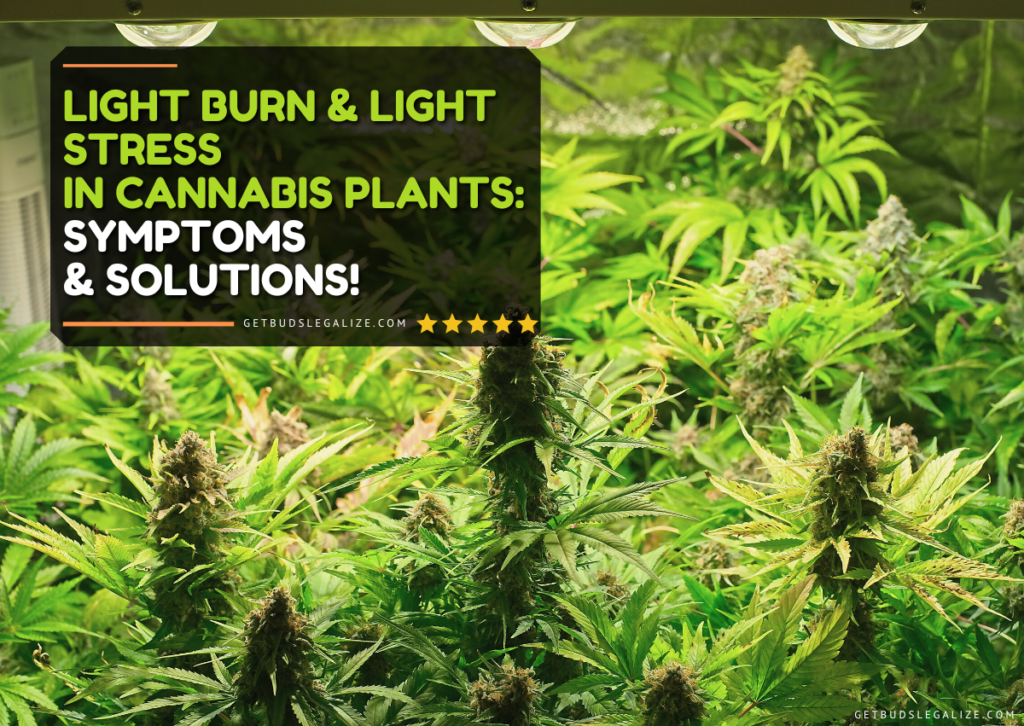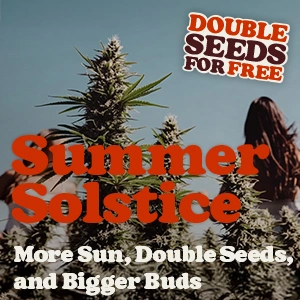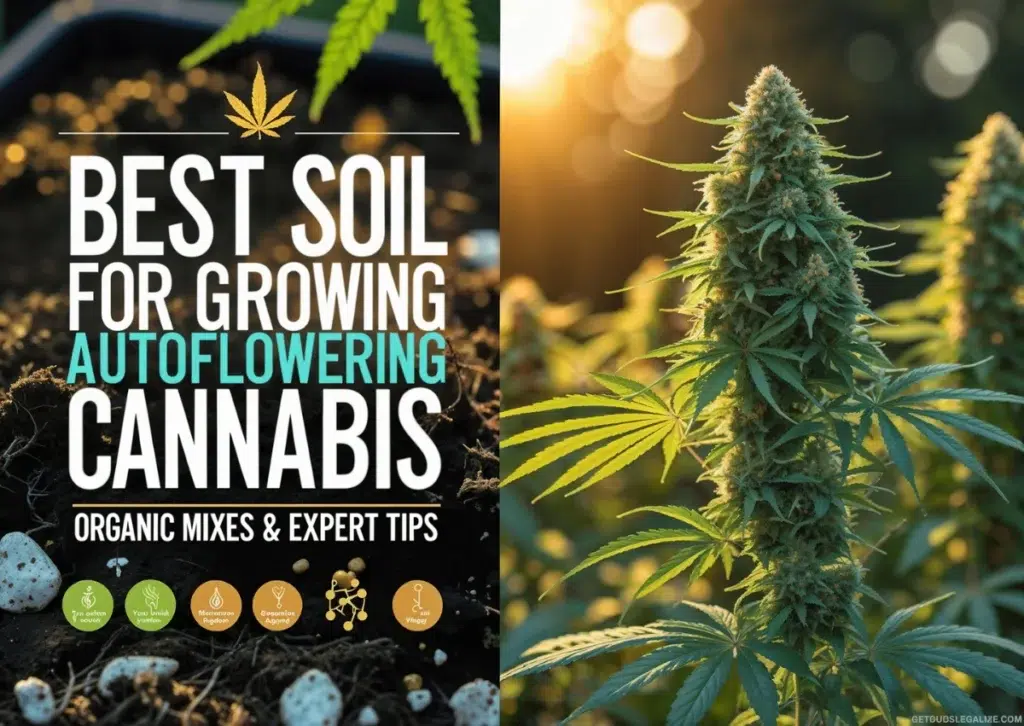Cannabis Light Burn & Light Stress: Symptoms & Solutions!
If you are growing cannabis indoors, you might have encountered the problem of light burn or light stress. This is a condition where the leaves and buds of your plants get damaged by the intense light from your grow lights. Light burn can affect the health, yield, and potency of your cannabis plants, so it is important to know how to prevent and fix it.
What Are The Symptoms of Light Burn/Stress in Plants?

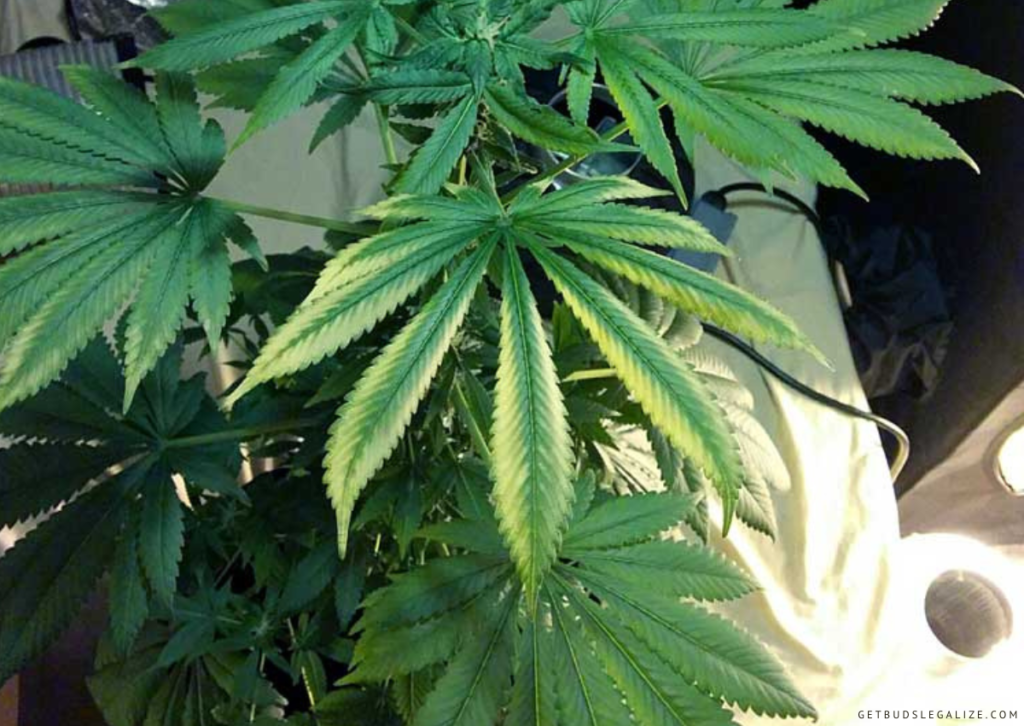
Cannabis light burn/stress is caused by exposing the plants to more light than they can handle. This can happen when the lights are too close to the plants, too powerful, or on for too long. This can affect both the leaves and the buds of cannabis plants, reducing their quality and yield.
- The first signs of light burn can be seen in the leaves that are nearest to the light source or at the top. The leaves may not become yellow, but instead, the tips may curl upwards in an unusual manner at first.
- As the issue persists, the leaves begin to yellow. Leaves that receive more light are lighter in color than those that don’t.
- If you observe yellowing leaves, especially at the tips, take a closer look and you’ll see that the veins still remain green.
- Leaves may curl upwards to provide shade for themselves, causing them to lose their shine and become crispy. Additionally, brown spots may appear on the leaves, resembling burn marks.
- Buds can start to bleach and turn a bright white color. This process removes the potency from the buds, rendering them useless.
Sometimes it can be confusing to tell the difference between nitrogen deficiency and light burn in plants. Nevertheless, it is important to be aware of certain distinct variations.
If a weed plant is deficient in nitrogen, its leaves will turn yellow and fall off, while leaves affected by light burn will not wilt or fall off unless they are plucked. Additionally, yellowing due to nitrogen deficiency usually starts at the bottom of the plant, whereas light burn often starts at the top.
How to Tell The Difference Between Light Stress and Heat Stress?
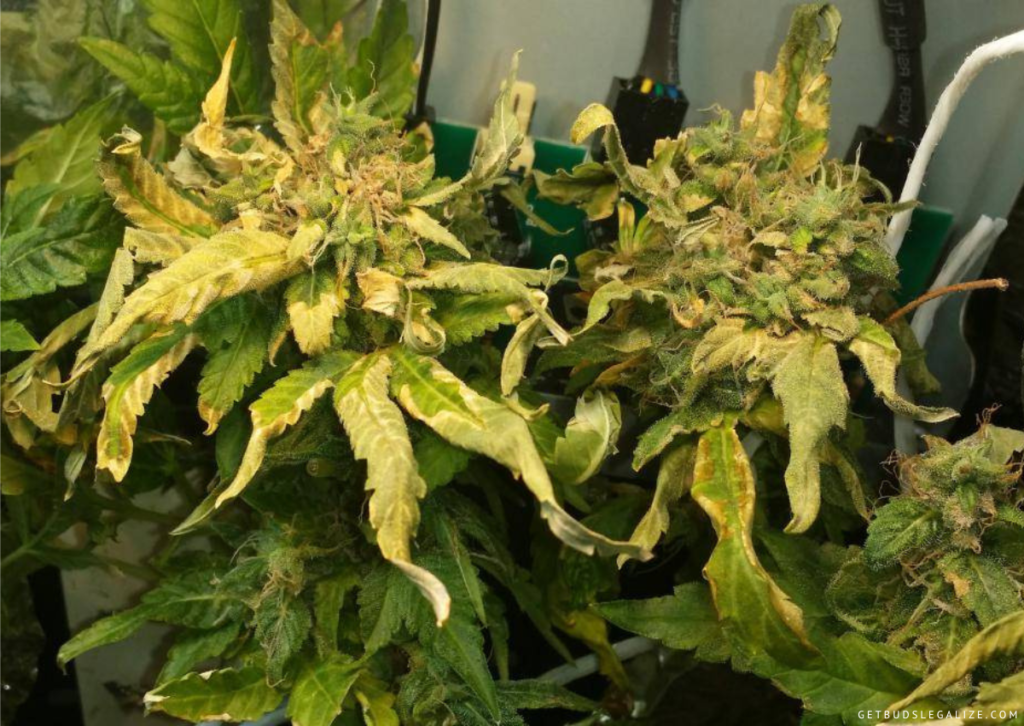
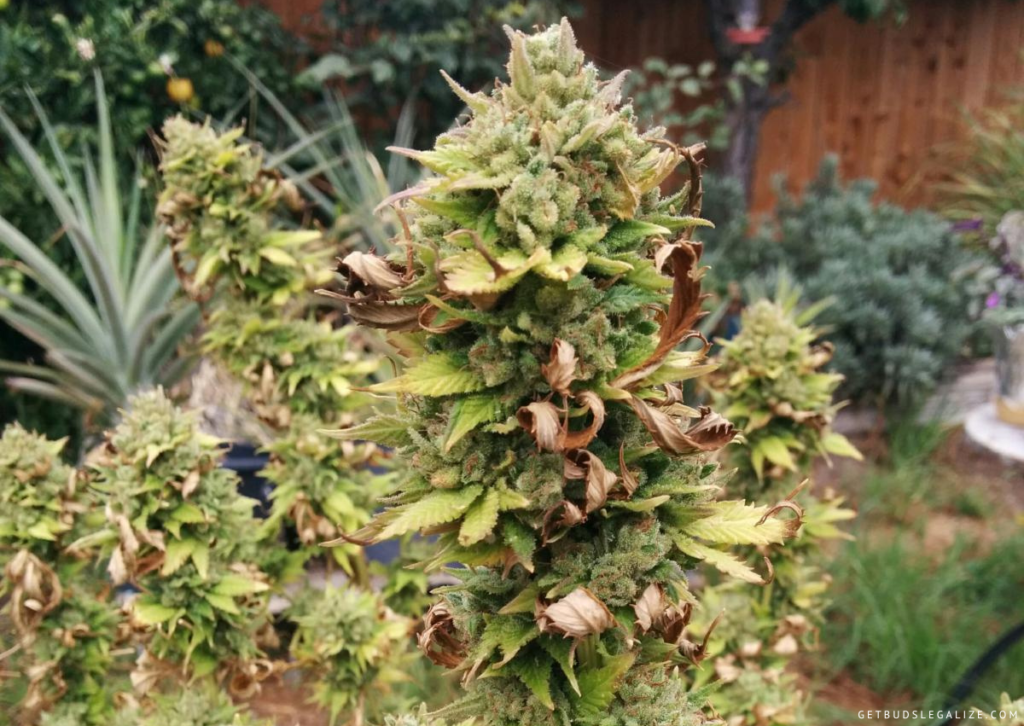
Heat stress is another common problem for indoor cannabis growers, especially in hot climates or poorly ventilated spaces. It can cause symptoms similar to light stress, such as leaf bleaching, fading, curling, or spotting, reducing the plant’s ability to absorb water and nutrients, leading to wilting, dropping, or nutrient burn.
The main difference between the two is that heat stress affects the entire plant, not just the parts exposed to light. Heat stress can also cause more water to transpire through plant leaves, making them look shiny or wet.
How To Prevent Light Burn/Stress in Cannabis?
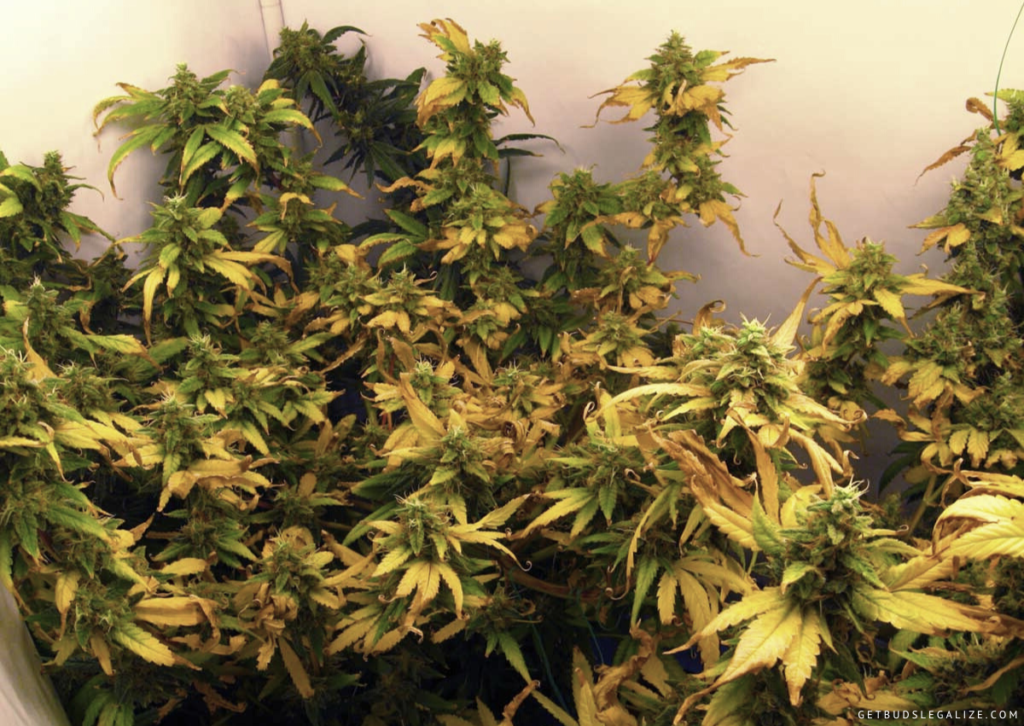
The best way to prevent cannabis light stress and light burn is to choose the right type of light for your growing space and adjust them according to your plant’s needs. Here are some tips to help you do that:
- Choose LED lights over HID lights. LED lights are more energy-efficient, produce less heat, and have a wider spectrum of light than HID lights. LED lights also allow you to adjust the light intensity and color according to the plant’s stage of growth.
- Use a lux meter or a PAR meter to measure the light intensity at different heights and distances from your plants. Lux meters measure the visible light that humans can see, while PAR meters measure the photosynthetically active radiation that plants can use for photosynthesis. Both types of meters can help you determine the optimal light intensity for your plants.
- Follow the manufacturer’s recommendations for hanging height and distance for your lights. Different types of lights have different optimal hanging heights and distances from the plants. For example, LED lights can be hung closer to the plants than HID lights, because they produce less heat and have a wider angle of light distribution.
- Adjust your lights according to your plant’s stage of growth. Cannabis needs different amounts of light during different stages of growth. In general, they need more light during the vegetative than during the flowering. You can adjust the lights up or down, change their color or spectrum, or change their duration or schedule.
- Monitor your plants for signs of light burn or light stress. If you notice any symptoms of light burn or light stress on your plants, such as bleaching, fading, curling, spotting, or stretching, you should move your lights further away from your plants or reduce their intensity or duration.
How To Fix Light Burn/Stress in Cannabis Plants?

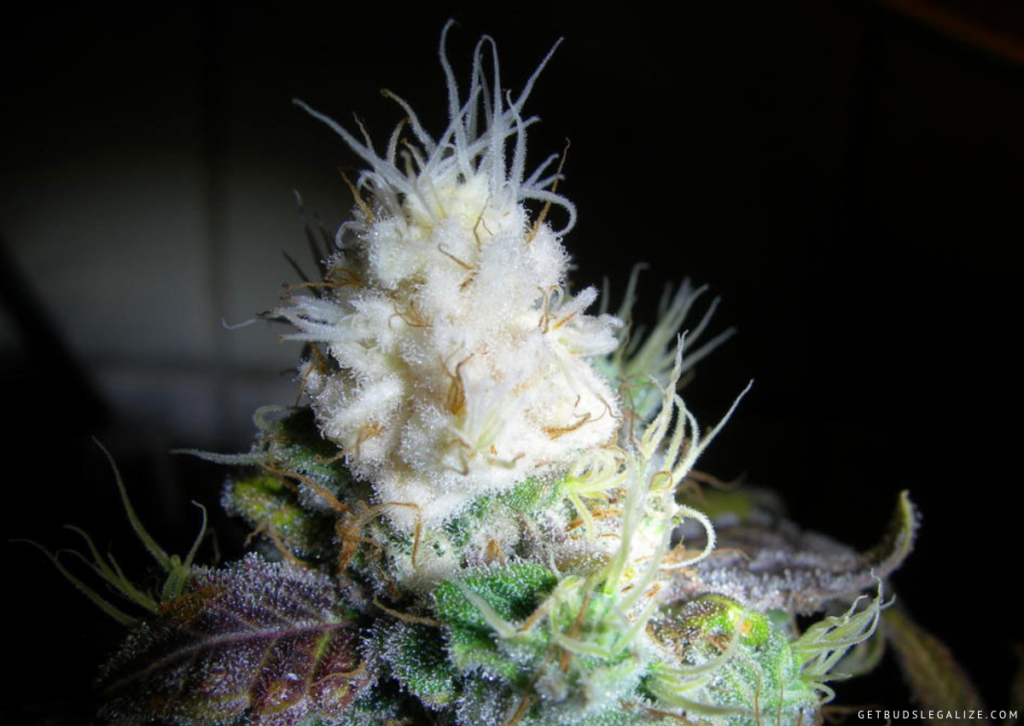
If your plants are already suffering from light burn/stress, don’t panic. There are some things you can do to fix them and prevent further damage:
- Move your lights further away from your plants or reduce their intensity or duration. This is the most obvious and immediate solution to stop the damage from getting worse. You can use a lux meter or a PAR meter to find the ideal distance and intensity for your plants.
- Prune or remove any damaged leaves or buds. This will help your plants focus their energy on healthy growth and recovery. It will also prevent any pests or diseases from taking advantage of the weakened parts of your plants.
- Increase the airflow and ventilation in your growing space. This will help lower the temperature and humidity levels in your grow space and improve the gas exchange between your plants and their environment. It will also prevent mold, mildew, or bud rot from developing on your plants.
- Flush your plants with plain water or a mild nutrient solution. This will help flush out any excess salts or nutrients that may have accumulated in your plants due to light burn or light stress. It will also help restore the pH and EC levels in your soil or growing medium.
- If you have limited space for growing plants, it is important to plan ahead and be proactive. One way to do this is by starting low-stress training early on, which can help prevent light burn in the future.
- Give your plants some time to recover. Depending on the severity of the damage, your plants may need a few days or weeks to recover from them. Be patient and gentle with your plants, and avoid any unnecessary stress or disturbance.
How Much Light Do Your Cannabis Plants Require During Their Life Cycle?
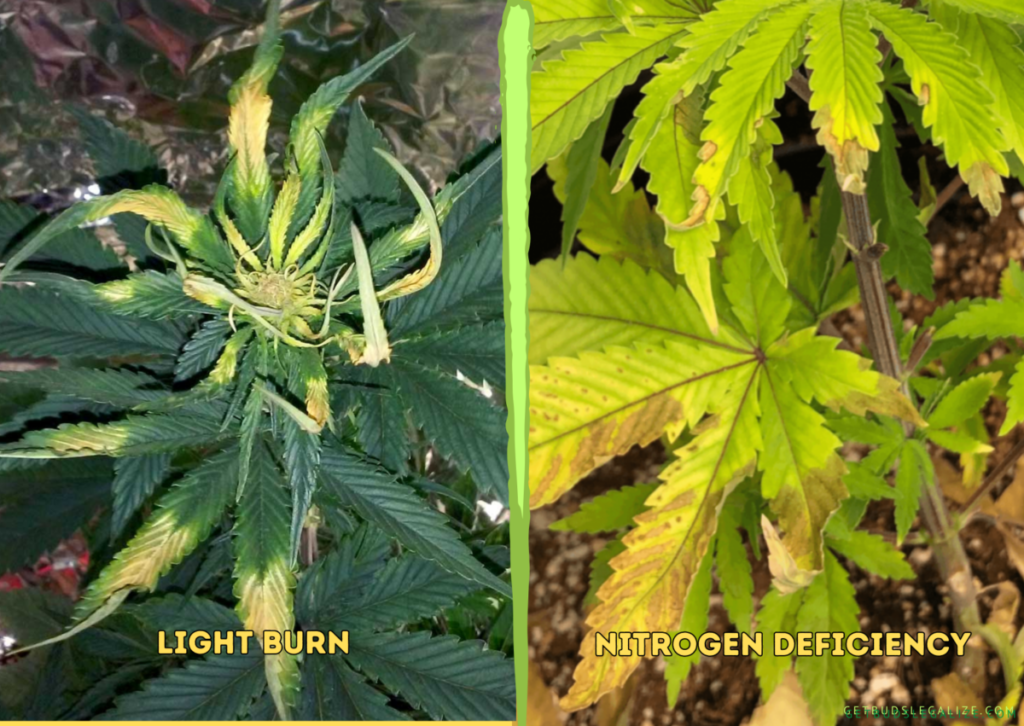
The growth stages of cannabis require varying amounts of nutrients and light. Seedling requires a moderate amount of light to prevent weak and fragile growth, while too much light can also be harmful. During the vegetative, the demand for light increases significantly, as seen by the development of broad fan leaves. When the plant starts blooming, it requires ample light to produce flowers. It’s important to note that the light spectrum that supports flowering is different from the one that promotes vegetative growth.
Here is a general guide that you can use to determine the appropriate lux ranges for each stage of the growing cycle:
- Clone and seedling stage: 5,000–7,000 lux
- Vegetative stage: 15,000–50,000 lux
- Flowering stage: 45,000–65,000 lux
Although the recommended lux level during flowering is 65,000, weed plants can tolerate up to 75,000 lux before experiencing negative effects.
What Is The Optimal Distance to Keep The Light From Your Plants?
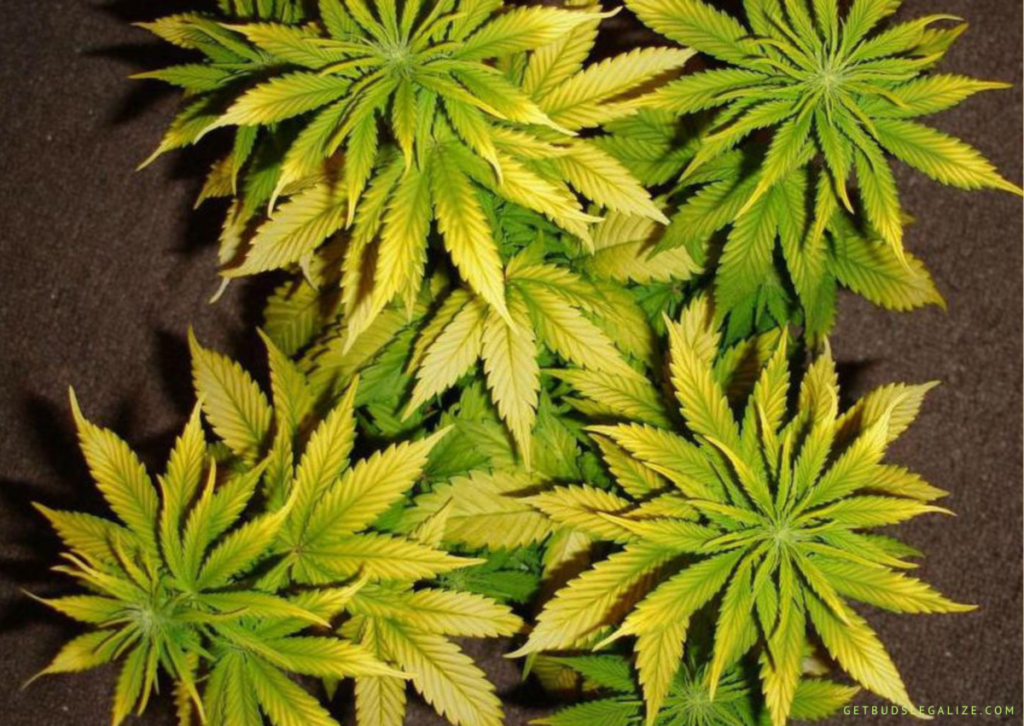

The optimal distance between your lights and your plants depends on several factors, such as the type of light you use, the wattage of your bulbs, the size of your plants, and the stage of their growth. As a general rule, you can follow these guidelines:
• Metal Halide (MH) and High-Pressure Sodium (HPS):
MH and HPS are the most popular types of lights for cannabis growers. They produce a lot of light and heat, which can be beneficial for plants’ vegetative and flowering. However, they also consume a lot of electricity and require a ballast, a reflector, and a cooling system to operate safely.
MH and HPS lights can cause light burn/stress if they are too close to the plants or if the temperature is too high in the grow space. To prevent this, you need to adjust the light distance and the plants according to the wattage of your bulbs. Here are some general guidelines:
- 150w MH or HPS: 20-25cm from the top of the plants
- 400w MH or HPS: 30-35cm from the top of the plants
- 600w MH or HPS: 35-41cm from the top of the plants
- 1000w MH or HPS: 50-60cm from the top of the plants
• Light Emitting Ceramic and Ceramic Metal Halide :
LEC or CMH are newer types of lights that use ceramic arc tubes instead of quartz. They produce a full spectrum of light that mimics natural sunlight, which can improve the quality and potency of your buds. They also use less electricity and generate less heat than MH or HPS lights, which can save you money and reduce the risk of light burn/stress.
However, they are more expensive to buy and may not be compatible with some ballasts or reflectors. LEC or CMH lights can also cause light burn and light stress if they are too close to the plants, so you need to follow these distance guidelines:
- 315w LEC or CMH: 41-46cm from the top of the plants
- 630w LEC or CMH: 60-66cm from the top of the plants
• LED Grow Lights:
LED grow lights are very energy-efficient and long-lasting, which can save you money and hassle in the long run. They also produce less heat than MH, HPS, or LEC/CMH lights, which can prevent light burn/stress in your plants.
However, they are more expensive to buy upfront and may not provide enough light intensity or spectrum for some strains of cannabis. LED lights can also cause light burn and light stress if they are too close to the plants, especially if they have high wattage or multiple diodes. To avoid this, you need to follow these distance guidelines:
- 1w LED: 30-32cm from the top of the plants
- 5w LED: 41-45cm from the top of the plants
- 300+w LED: 75cm or more from the top of the plants
• Fluorescent Grow Lights:
Fluorescent lights are tubes or bulbs that contain mercury vapor that emits ultraviolet light when an electric current passes through it. The ultraviolet light is then converted into visible light by a phosphor coating on the inside of the tube or bulb. Fluorescent lights are cheap to buy and run, and they produce a cool white light that is suitable for seedlings, clones, or vegetative plants.
However, they do not provide enough light intensity or spectrum for flowering plants, and they may need to be replaced more often than other types of lights.
Fluorescent lights cannot potentially cause light burn/stress in your plants, as they do not generate enough heat or brightness to damage them. However, you still need to keep them close enough to your plants to provide adequate light coverage. Here are some general guidelines:
- T5 fluorescent tubes: 5-10cm from the top of the plants
- CFL bulbs: 10-15cm from the top of the plants
Will Plants Recover From Light Burn?
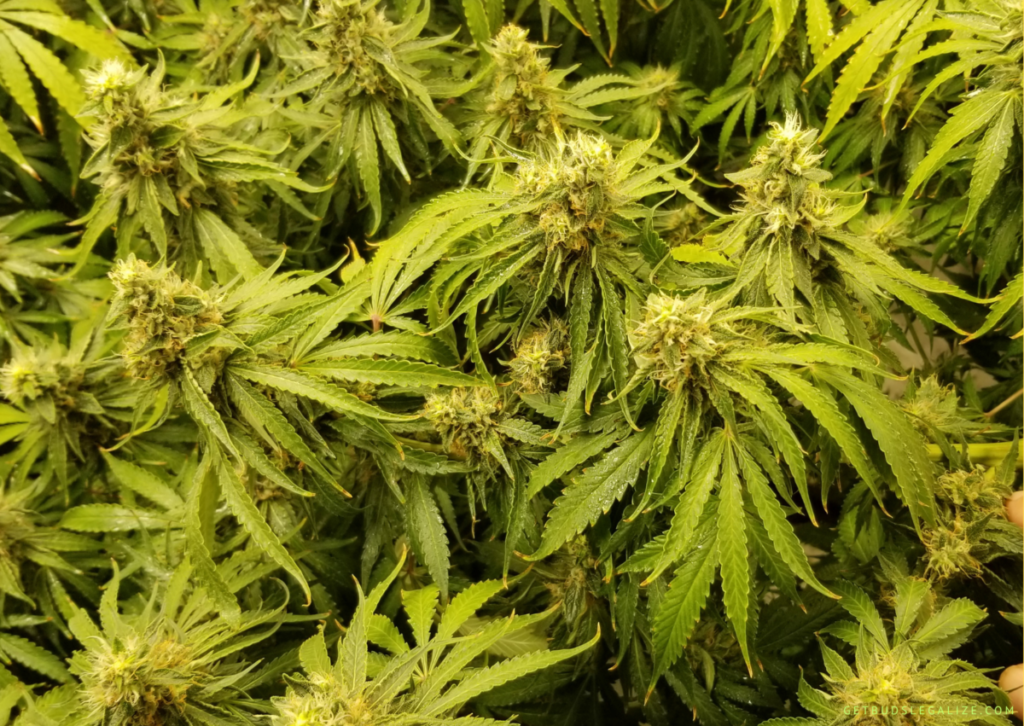
The answer to this question depends on the severity and duration of the light burn. If the light burn is mild and caught early, your plants will likely recover from it and resume their normal growth and flowering. However, if the light burn is severe and prolonged, your plants may not recover from it and suffer from permanent damage or reduced yield.
The best way to avoid this scenario is to prevent it from happening in the first place by following the tips we have mentioned above. However, if you are experiencing these problems on your plants then you need to fix them as soon as possible by following the steps mentioned above.
Bottom Line
Knowing how to identify the signs of too much light on plants, what causes them, and how to fix them is essential to growing healthy plants and getting successful cannabis yields from your indoor grow.
We hope our blog post has helped you understand better and addressed some of your queries. If you have any further questions or wish to learn more, we recommend referring to our cultivation guide or reaching out to us via email. We are always happy to assist you. Happy Growing!
FAQs about Cannabis Light Burn/Stress
The main difference between nutrient burn and light burn is that nutrient burn affects the cannabis leaves from the bottom up, while light burn affects the leaves from the top down. Nutrient burn also tends to affect all parts of the plant equally, while light burn tends to affect only the parts that are closest to the light source.
To fix it, you need to eliminate any light leaks or sources of light that can interfere with your plants’ dark period. You can use blackout curtains, duct tape, cardboard, or any other material that can block out any light from entering your grow room. You should also check your timers, fans, and other equipment and make sure they are not malfunctioning or emitting light.
You also need to maintain a consistent and stable light schedule for your plants during their flowering. You should follow a 12/12 schedule for most strains or a 10/14 schedule for some sativa strains that require a longer dark period. You should avoid changing the light schedule abruptly or frequently, and give your plants at least a week to adjust to any changes.
If your goal is to create a more balanced and diverse spectrum for your plants you can mix different types of lights in your cannabis cultivation. However, you should be careful not to create hot or dark spots in your grow space and maintain a consistent distance and intensity for all of your lights.
The duration of your lights depends on the stage of growth of your plants. Generally speaking, you should keep your lights on for 18 hours per day during the vegetative, and 12 hours per day during the flowering. However, you can also experiment with different light cycles for different strains and results.
There is no definitive answer to this question, as different types of lights have different advantages and disadvantages. However, LED lights are generally considered the best type of light for cannabis, because they are more energy-efficient, produce less heat, and have a wider spectrum of light than HID lights. LED lights also allow you to adjust the light intensity and color according to the plant’s stage of growth.
Marijuana plants need different colors or spectra of light during different stages of growth. In general, cannabis plants need more blue light during the vegetative, and more red light during the flowering. Blue light promotes vegetative growth, while red light promotes flowering and bud production. You can use full-spectrum LED lights that have both blue and red diodes or switch between different types of lights or bulbs during different stages of growth.
There is no definitive answer to this question, as it depends on many factors such as the type of lights, the size of your grow space, the number of plants, the strain of plants, etc. However, a general rule of thumb is to aim for at least 50 watts per square foot of grow space for HID lights, or at least 30 watts per square foot of grow space for LED lights.
You can use a lux meter or a PAR meter to measure the light intensity at different points in your grow space. You can also observe the appearance and behavior of your plants. If they are getting enough light, they will have healthy green leaves, sturdy stems, compact nodes, and abundant buds. If they are not getting enough light, they will have pale yellow leaves, weak stems, stretched nodes, and sparse buds.
ILGM Fertilizer

- From seedling to harvest, give your plants everything they need.
- Enough for feeding at least 5 plants.
- Discounted Package Deal
- Works well in soil, hydroponics, and other growing mediums.
- The best way to treat your plants
ILGM Plant Protector

- Protect your cannabis from diseases and harmful pests.
- Contains three 20 ml bottles.
- Enough supplies to protect 20 plants.
- It can be used in soil, hydroponic, and all other growing mediums.

